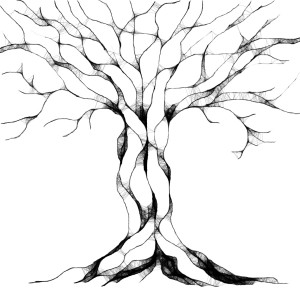What We Once Named Poison
 At the next Sunday Sangha, it will be my turn to bring in a reading for the group to discuss. I’m thinking about bringing the passage below, from After the Ecstasy, the Laundry, by Jack Kornfield:
At the next Sunday Sangha, it will be my turn to bring in a reading for the group to discuss. I’m thinking about bringing the passage below, from After the Ecstasy, the Laundry, by Jack Kornfield:
In Buddhist psychology, this maturing [of the spiritual path] is described through the image of a poisonous tree, which represents the suffering of the world. When we discover that a tree in our midst is poisonous, our first impulse is to try to cut it down–to remove it, so it no longer can be harmful. At this initial stage of practice our language is one of conflict: fear of poison and impurity, and the effort to root out and destroy that which is dangerous.
But as our compassion deepens, we recognize that the tree too is a part of the web of life. Instead of destroying it, we respect even this tree, though we also put a fence around it, warning others of the poison so they will not be harmed. Now our language changes to one of compassion and respect, rather than fear. Our difficulties, inner and outer, are now met with mercy. This is the second stage of practice.
Finally, as our wisdom deepens, we understand that our very problems and poisons are our best teachers. It is said that the wisest beings will come looking for the poisonous tree to use its fruit as medicine to transform the sufferings of the world. The energies of passion and desire, anger and confusion become transformed into the ardor, strength, and clarity that bring awakening. We understand that it is through facing the very sufferings of the world that the deepest freedom and compassion arise. What we one named poison is now recognized as an ally in our practice.
